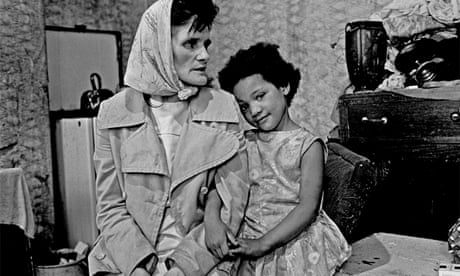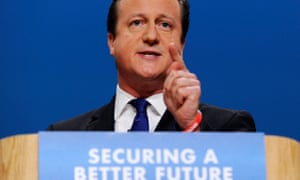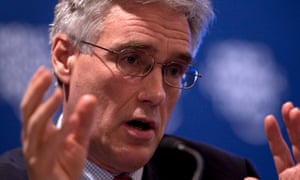As housing charity Shelter turns 50, the country is still plagued by overcrowding, rogue landlords, insecure tenancies and homelessness. How do we even begin to make things better?

Boys from the City Of London school on a charity walk in aid of Shelter from Blackfriars, London, to Windsor, Berkshire, on 26 March 1969. Photograph: Len Trievnor/Getty Images
Its official name was Navigation Street, and a glance at a 19th century map suggests its origin: an isolated row of terraced houses leading down to the canal that runs through the middle of my hometown.
Canals were originally called “navigations” and the people who dug them “navvies”. This term – still in use in the 1960s – was code for poor, itinerant, Irish manual workers. So we called it “Navvy Street”: it was where the poorest people in the town lived and probably served that function from when it was built to when it was knocked down and turned into a “close”.
Navigation Street was the place I thought of when the housing charity Shelter reissued documentary photographs from the 1960s to mark its 50th anniversary. If you flick through Nick Hedges’ photos now, you could be forgiven for thinking they depict some kind of uniform, northern industrial bleakness at of the time. But you’d be wrong.

Shelter and the slums: capturing bleak Britain 50 years ago
The overcrowding, dirt and abject poverty in those images shocked people because they were exceptional. Two decades of post-war social housebuilding, plus a pro-active welfare state, had done a lot to suppress poverty. Places like Navigation Street were rare by the late sixties.
Shelter was born because people realised dwindling number of classic slum streets were not the only problem: there was widespread hidden homelessness expressed through overcrowding. The private rented sector was utterly insecure and housing costs were devouring the incomes of the poor.
Skip forward 50 years and we too have rising homelessness – 54,000 families in England last year, up 36% since the financial crisis began. Housing charities record rising overcrowding, precarious tenancies, predatory landlords and unaffordable rents. The difference is it’s not only the poor who suffer.
The shared student house has been reincarnated as the shared young professional’s house, with some even forced to share rooms. According to Crisis, there are 3.5m households containing a “concealed” adult or couple in England.
Meanwhile apartments too small to live in are being built across southern England: their occupants will have jobs once considered middle class. Precarious tenancies, outlawed during the housing reform movement of the 1960s, have created a “complain and you’re out” culture.
If you wanted to photograph the modern housing problem you’d go to the coffee shops where young people perch over laptops, late into the night, rather than endure their overcrowded flat. You would photograph the sofa-surfers; the migrants forced to live in converted garages; the families packing their bags as rent hikes and benefit cuts in the private rented sector force them to move to the periphery of towns and cities, or throw themselves at the local council for help.
The root of this problem is not one of policy – though the row over social housing and housing supply will probably shape this parliament – the deeper problem is the financialisation of home ownership.
At one point, rising home ownership solved many of the problems identified the 1960s. The predictably steady rise in house prices over time, like predictable inflation, created an escalator for the working class. If you combined that with vigorous social housebuilding, as practised by both Labour and Conservative councils in the 1970s, you created affordability at both ends of the scale.
If you then dramatically slash the supply of social housing, through right-to-buy and reduced council building, you create a permanent imbalance that turns home ownership into a form of asset investment.

‘Pay to stay’ trap will force working families out of council homes
What you get then is boom and bust. And the only way to cure the bust is for the government to greet every collapse in market prices with effective state subsidies for home ownership. This, in turn, induces a speculative frenzy of one way bets – on development, on buy to let, on off-plan investment buying from abroad.
To economists who study financial frenzy, the British housing market has followed the classic curve: the certainty of rising prices and short supply draws more and more people into the market, knowing a crash cannot wipe them out – because when confronted with falling house prices, governments have used taxpayers’ money and micromanagement of the banks to halt a spiral of repossessions and falling prices.
We don’t know what Britain would look like if the same levels of explicit subsidy and implicit preference had been pumped into the social rented sector. All we know is that the current situation is not tenable.
But we can ask ourselves the following questions:
First: how much space are people entitled to live in? The market sets no limits; even such formal rules as they still exist (they are being weakened) are flouted by the young salariat.
Second: what is the optimal balance between the private, social and state-owned rented housing and the owner-occupied sector? This cannot be hard to fathom since many cities in the 1980s and early 1990s achieved housing markets that “cleared” in economic terms: in Leicester in the 1980s I had no problem finding a secure private tenancy; no problem getting the council to hound my landlord to maintain it properly; very little problem moving from there to a housing association flat; very little problem transferring, as a key worker, from there to a council flat in London. Yes, London.
Third, what do we mean by “affordable”– when it comes to either rents or prices on state-specified newbuild homes? Under both Labour, Coalition and the Conservatives the concept of affordability has become delinked from incomes and attached to a percentage of the market rate. The same state that decided nobody should be repossessed during the 2008-11 housing slump could decide that nobody has to pay more than a fixed percentage of their incomes on housing costs.
Maybe we need to start with principles: that everyone has a right to a home; that every person has a right to a minimum amount of space in that home; and that those who claim the right to own houses nobody lives in should pay a hefty, disincentivising penalty.
Yes, that’s an infringement of the market – but housing in Britain has never been a free market: it is being created and re-created through regulation and deregulation – on benefits, on affordability, on building standards, on right to buy. The point is to shape the market towards smart outcomes.



